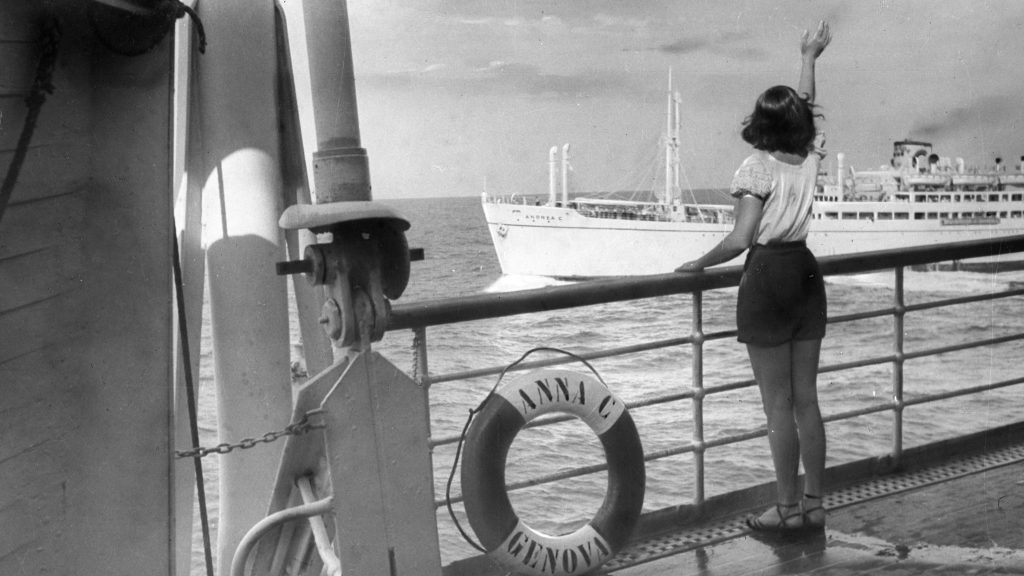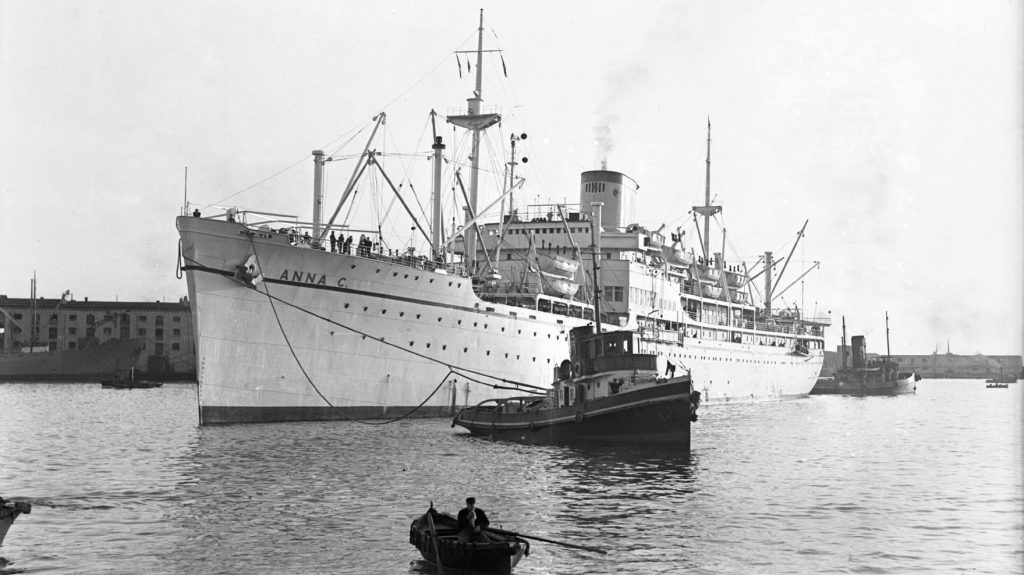Costa Cruises is celebrating its 75th anniversary. On 31 March 1948, the motor vessel Anna C, the first passenger ship of the company, left Genoa for Buenos Aires. The Italian cruise line is celebrating its anniversary with a series of special initiatives in Genoa this autumn.

75 years ago, on 31 March 1948, the motor vessel Anna C left Genoa for Buenos Aires with 768 guests on board. Thus began the history of Costa Cruises. An important milestone for the company, the only one to sail under the Italian flag, which testifies to a truly exceptional heritage of experience and tradition in the global cruise industry.
In all these years, day after day, Costa has taken millions of guests around the world, sharing the happy and unforgettable moments of their holidays. From the transatlantic voyages of the Anna C to the spectacular cruises of today, on board ships such as the Costa Smeralda and the Costa Toscana, Costa has been able to innovate the way people go on holiday at sea, offering unique experiences.
From Anna C to Costa Toscana: the Success of Costa Cruises
The story that began on 31 March 1948 with the Anna C actually has older roots. It originated as far back as 1854, when Giacomo Costa founded in Genoa the Giacomo Costa fu Andrea, a small-scale company that operated by buying and selling olive oil and textiles. From the 1920s, this company also equipped itself with a fleet to transport goods all over the world.

By the end of the Second World War, only one ship, the steamer Langano, had survived the conflict. The destruction of the Italian passenger fleet, the ever-increasing demand for passenger traffic, the economic crisis and the transoceanic migratory flow drew the Costa family’s attention to passenger transport on transatlantic routes. In 1947, the Giacomo Costa fu Andrea changed its name to Linea C (Line C), a line that would become famous over the course of more than three decades of transatlantic service to and from Latin America. The new passenger service offered accommodation in first and second class. On 31 March 1948, the first passenger ship of the Costa fleet, the Anna C, departed from Genoa. She was the first transatlantic liner to cross the South Atlantic since the end of the war and the first to offer guests air-conditioned cabins. The ship reached Buenos Aires 16 days after departure. The Anna C was soon followed by other ships, to meet the growing demand generated by the migratory flow.


The concept of the holiday cruise developed as the evolution of first class on the traditional transatlantic routes. Costa pre-empted the transition from liner service to cruising, effectively meeting the burgeoning tourist demand on the part of first class travelers. Starting from the 1950s, Linea C began using ships on cruises in the Mediterranean and South America to capitalize on the fact that the seasons were out of phase in the northern and southern hemispheres and therefore redeploy the fleet in periods when there was less traffic. The first step towards the cruise market came in early 1959 with the radical conversion into a cruise ship of the small motor vessel Franca C. The vessel’s capacity was reduced to 552 berths, all in one class, and her passenger cabins had private bathrooms and air conditioning. After debuting in the Mediterranean, in winter 1959 the Franca C began a series of holiday cruises in the Caribbean with departure from Fort Lauderdale.
In the 1960s and ‘70s the demand for regular liner services declined sharply on account of the end of mass migration and the advent of air travel. The company responded not only by marketing cruise vacations but also by building a fleet designed specifically to meet the growing demand for tourism: the first new addition was the Eugenio C, launched in 1964 – christened the ship of the future, already designed to break down the division into classes. In 1968 the Franca C introduced the fly+cruise package for the Caribbean, a formula that would revolutionize the concept of the vacation.
During the 1970s and 1980s, the idea of the ship as a holiday destination became unequivocally established, and the division into classes completely disappeared. Cabins tended to standardize, and entertainment venues multiplied: bars, theatres, casinos, discos.
It was with these assumptions in mind that Costa Armatori prepared for the great leap forward, represented by the birth of Costa Cruises in 1986. The entry into the world of mass communication, combined with a modern marketing activity and a search for itineraries more suited to the new public established the characteristics of another milestone in the company’s history. In a handful of years, Costa cruises went from a restricted target of the population to the wider public, on an international level, with more affordable prices, new ships, and cruise programs for families and children.



1997 marked another turning point and the beginning of a new phase of development. With the change of ownership to Carnival Corporation, the company’s investment capacity grew, but its spirit of innovation and constant search for new ideas to make its guests’ holidays unique remained unchanged. In the second half of the 1990s, Costa was the first to offer cruises in the Mediterranean in winter. Further important innovations concerned the fleet’s ships, the first in Europe to be equipped with cabins with private balconies. Up to the present day, with the entry into service of the first ships capable of being powered by liquefied natural gas, the Costa Smeralda and Costa Toscana, and the introduction of unique experiences, both on board and ashore, that lead guests to discover destinations.
Today, Costa Cruises is a holding company, Costa Crociere S.p.A. (Costa Group), to which the historic Costa Cruises brand and the German brand AIDA Cruises belong. With a fleet of 22 ships, all sailing the Italian flag, with a total capacity of around 70,000 low berths, it is the number 1 company in Europe. It is part of Carnival Corporation & plc, which is listed on the London and New York stock exchanges and is the world leader in its sector.
Contact us for more details and to book your cruise with Costa Cruises.
Also read: Celebrity Cruises brings pickleball to the high seas
Historic pictures: ©Fondazione Ansaldo-Archivio Costa